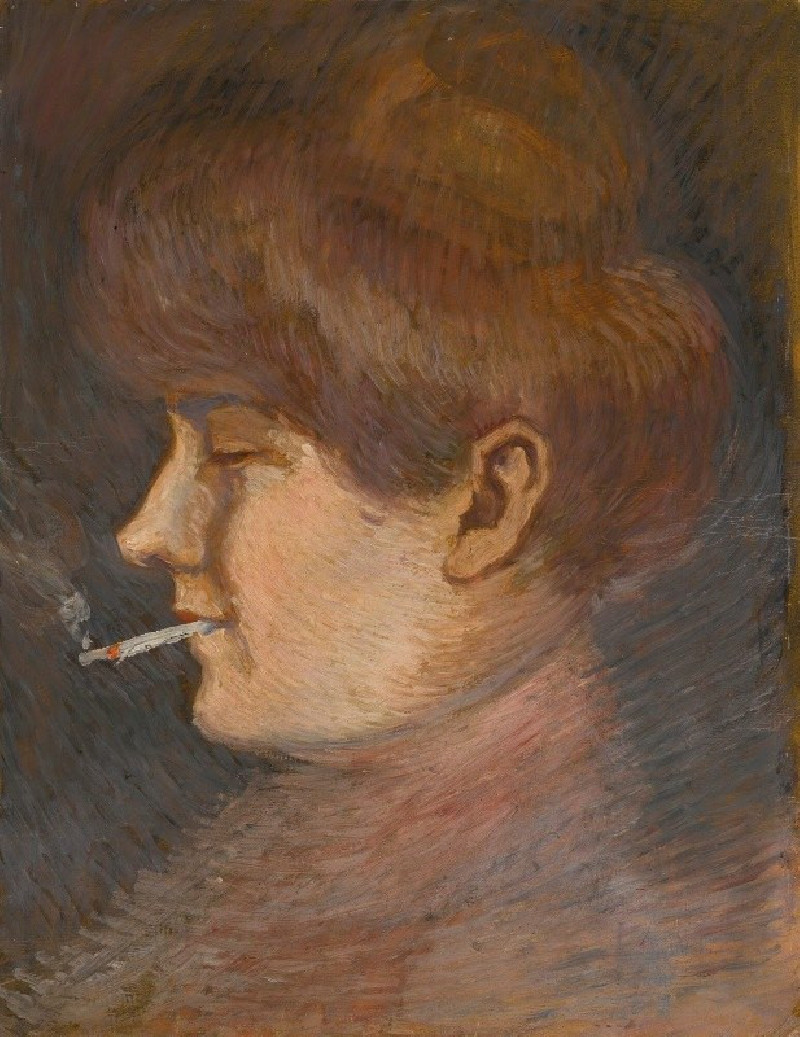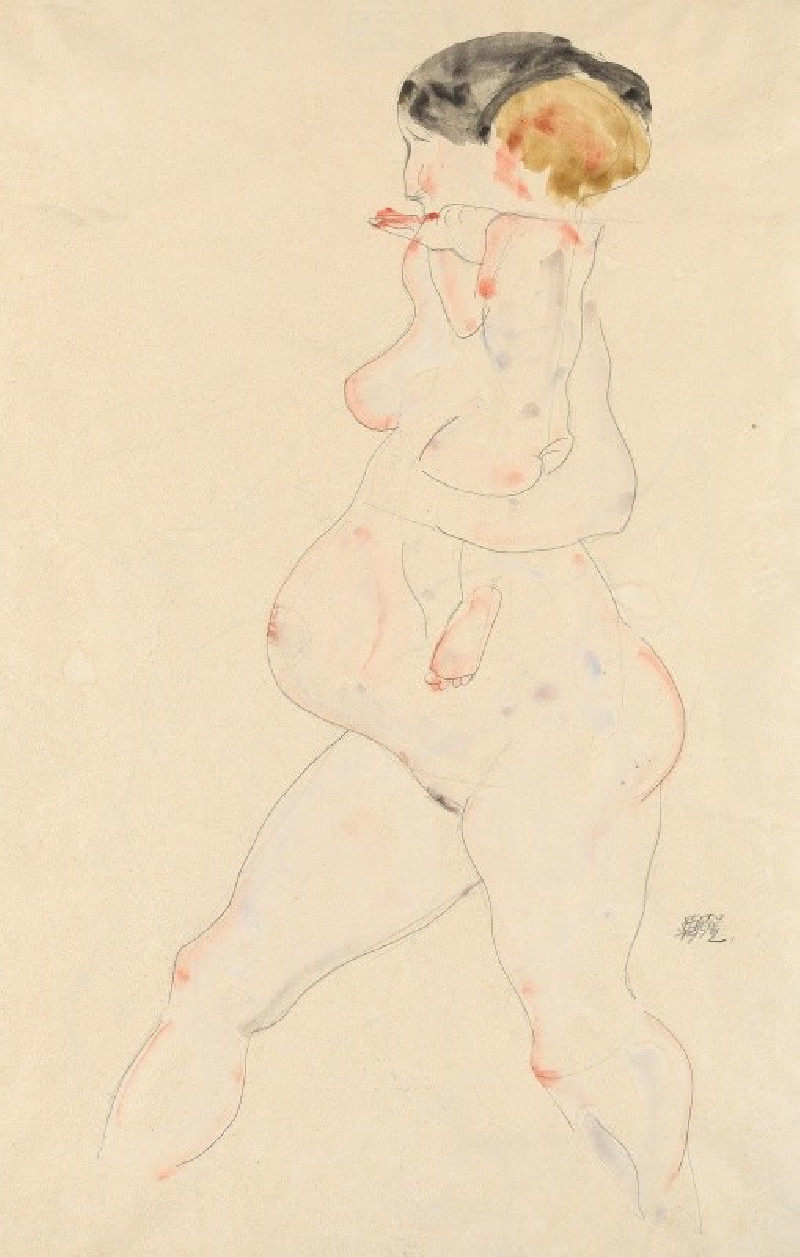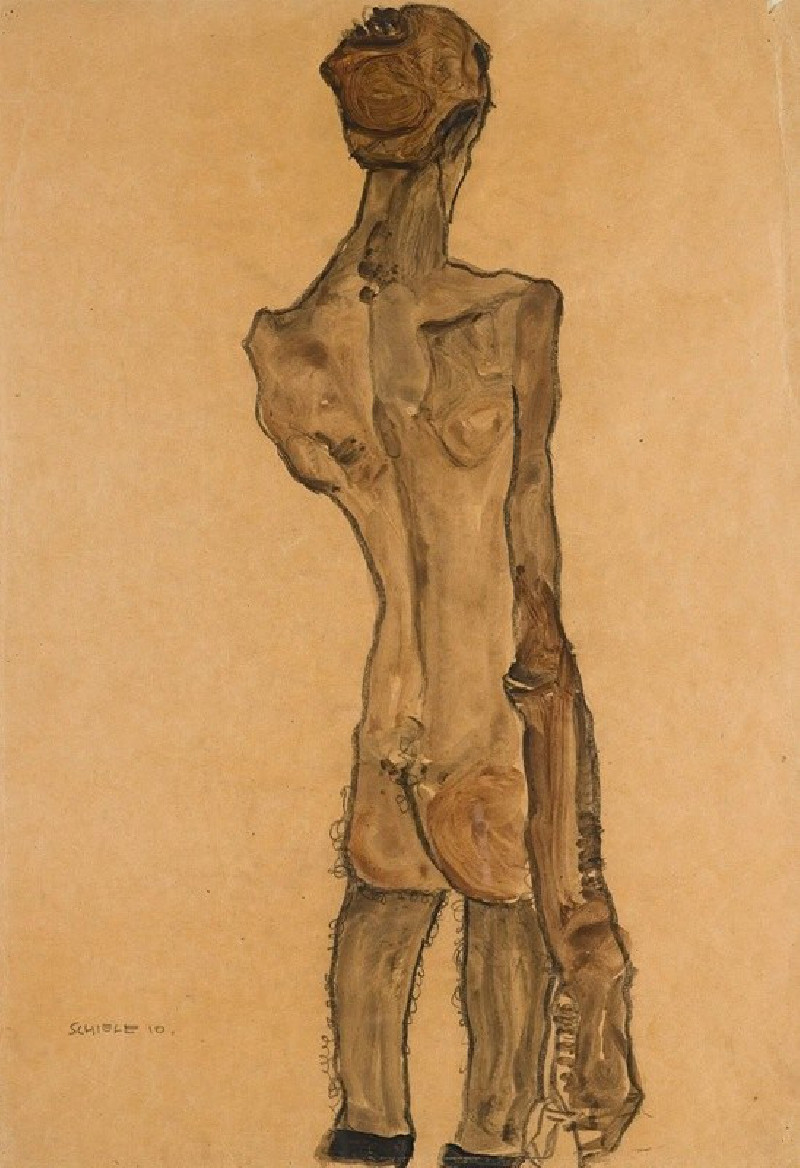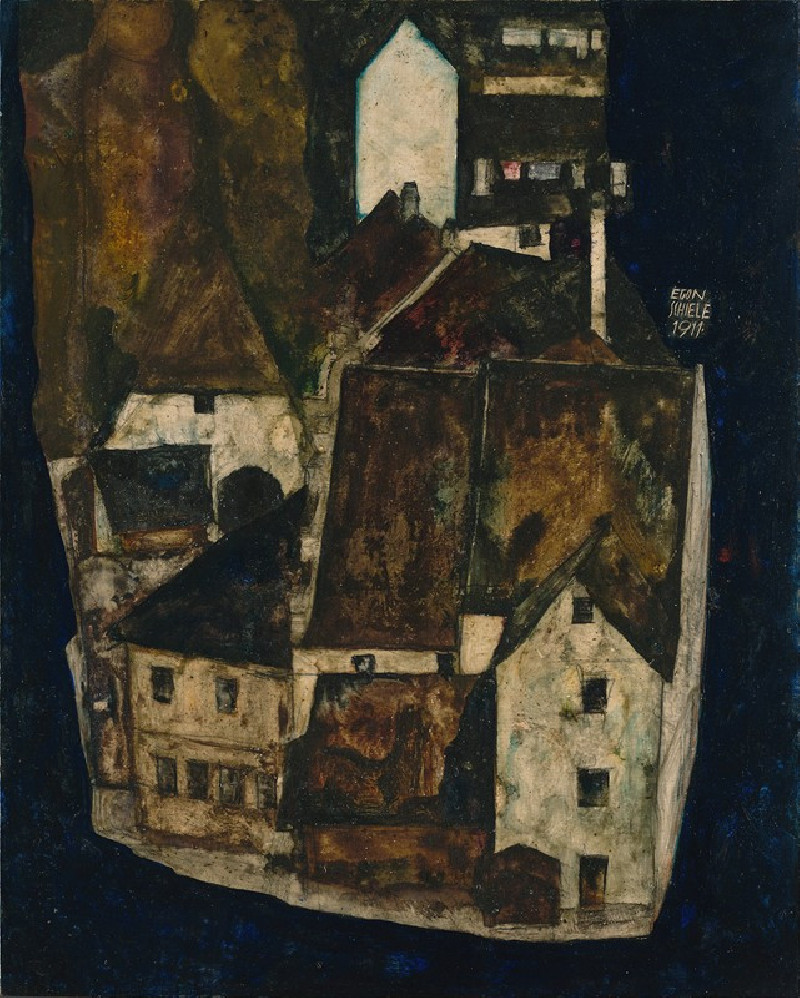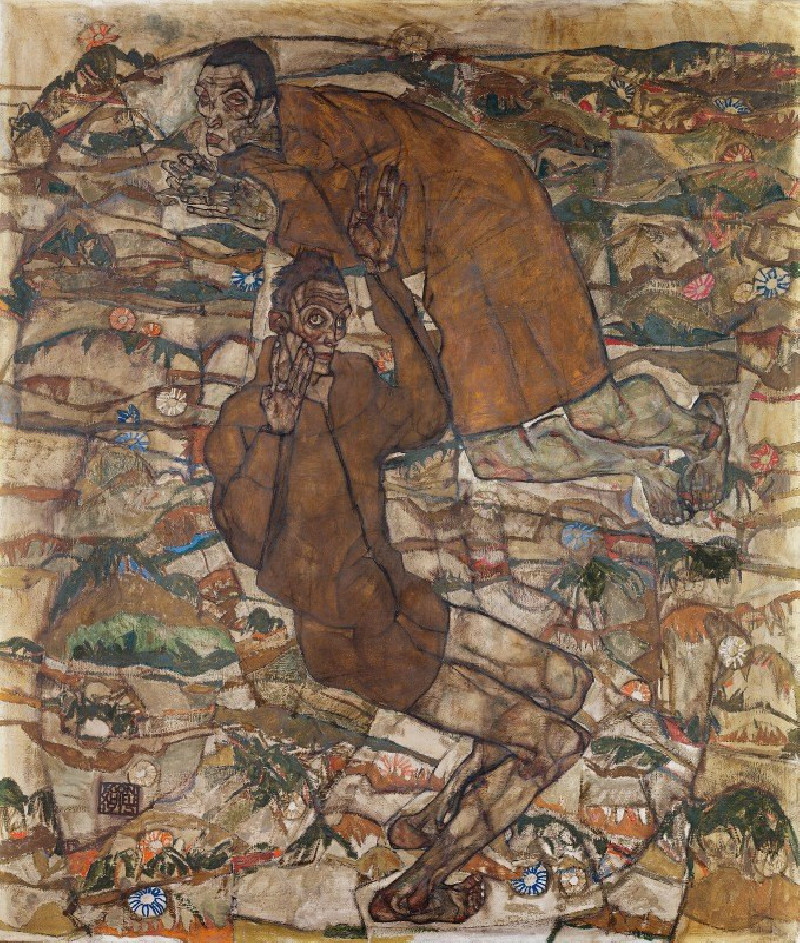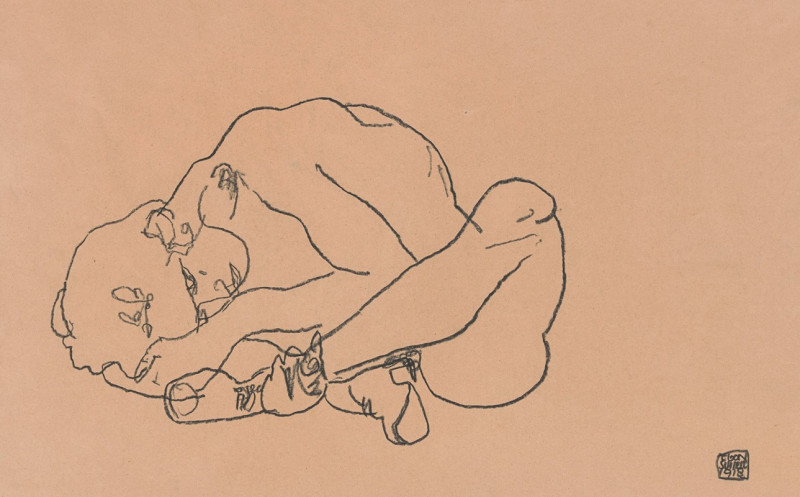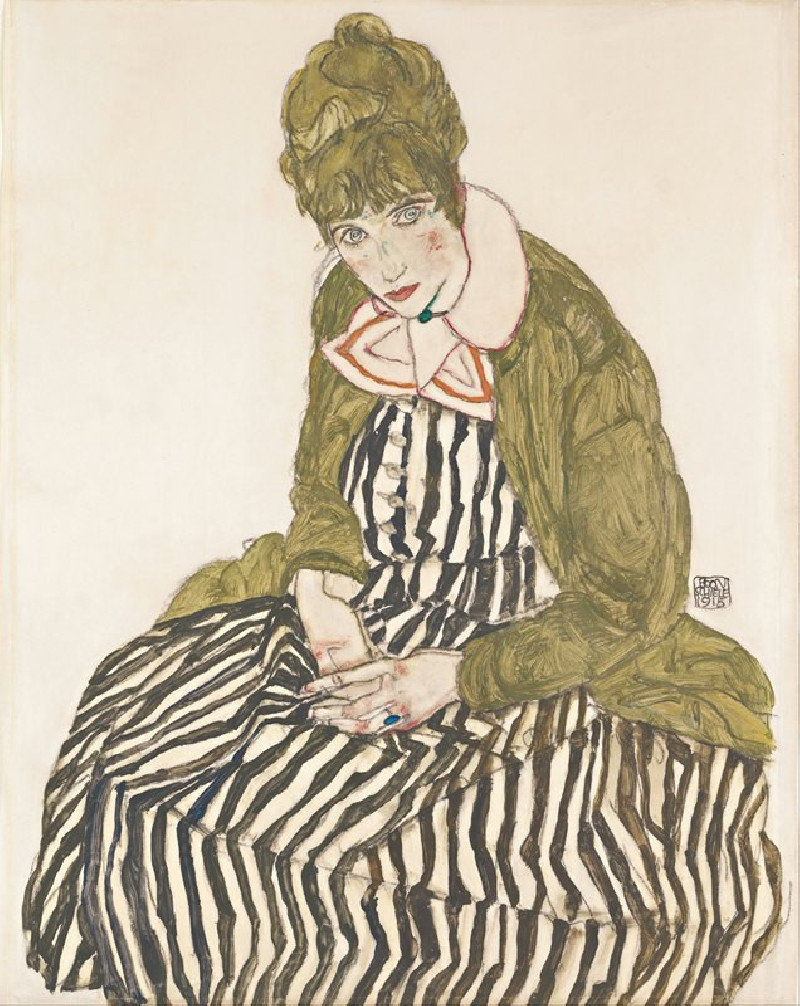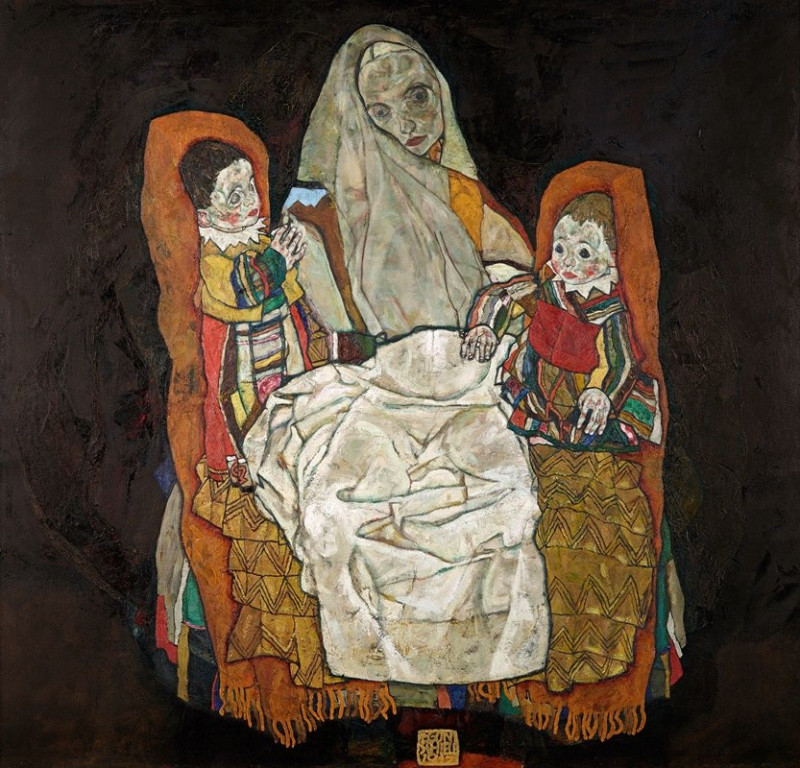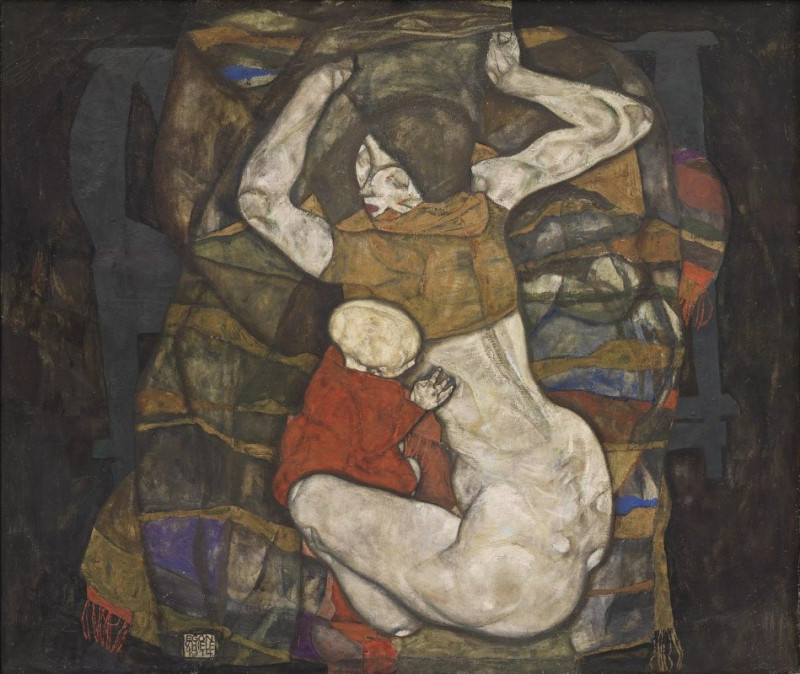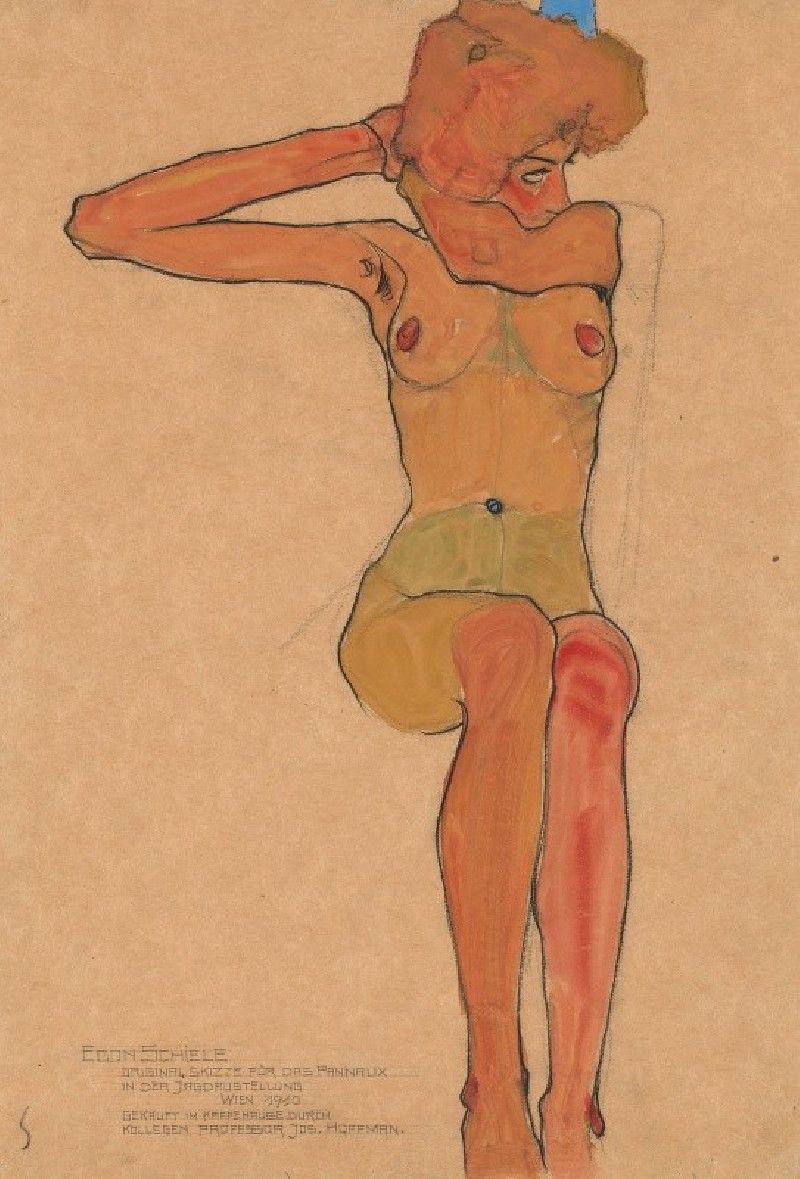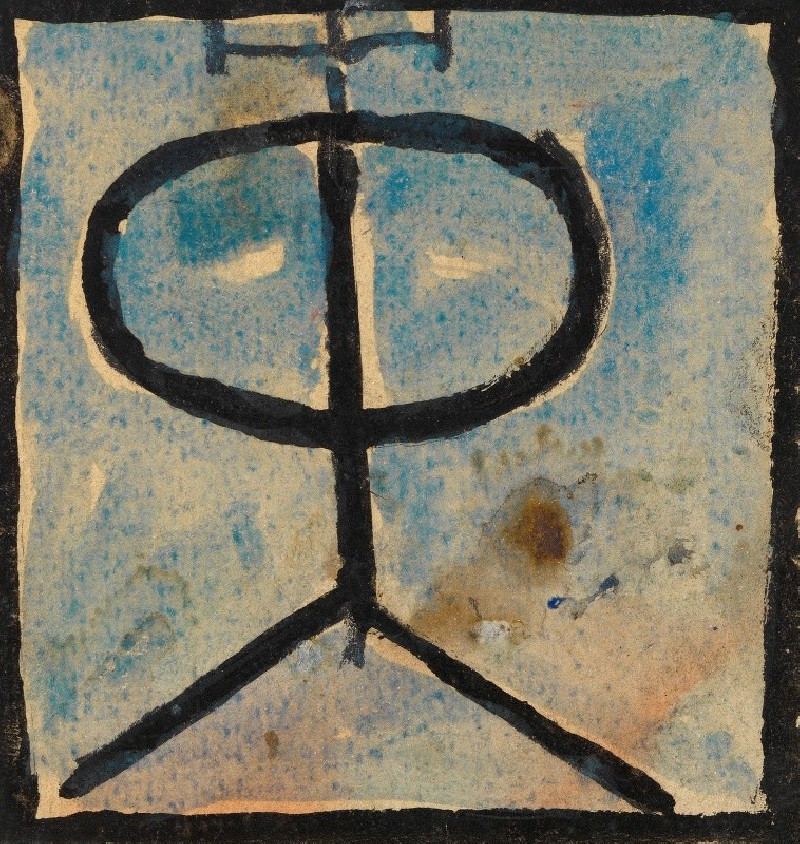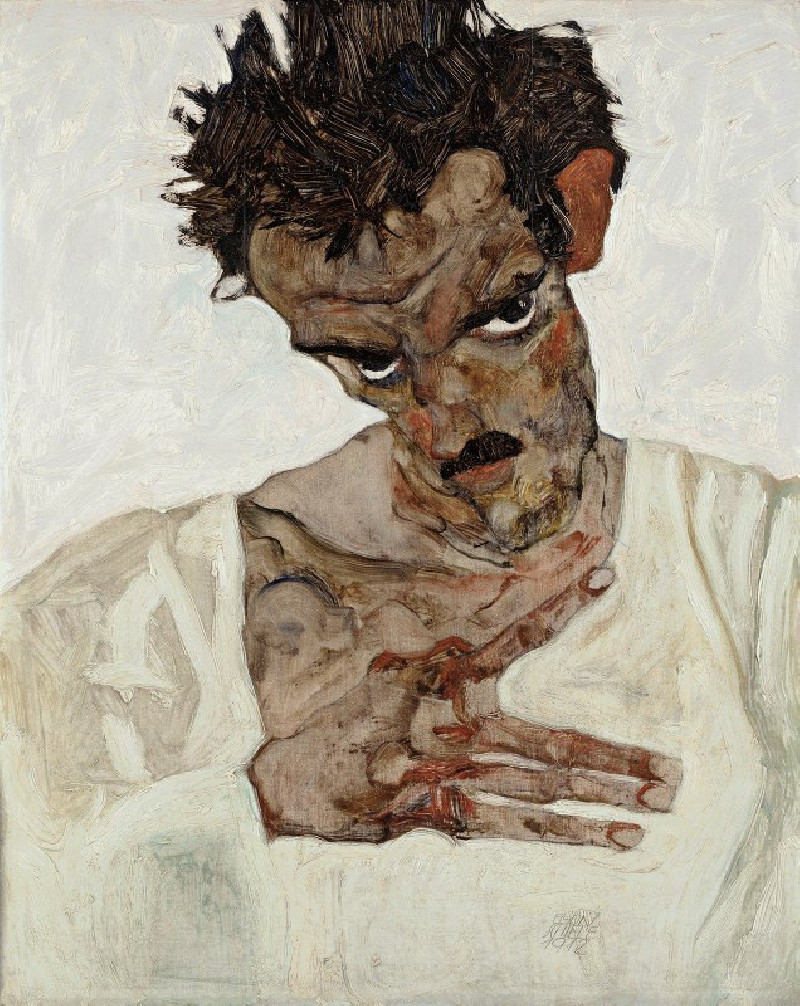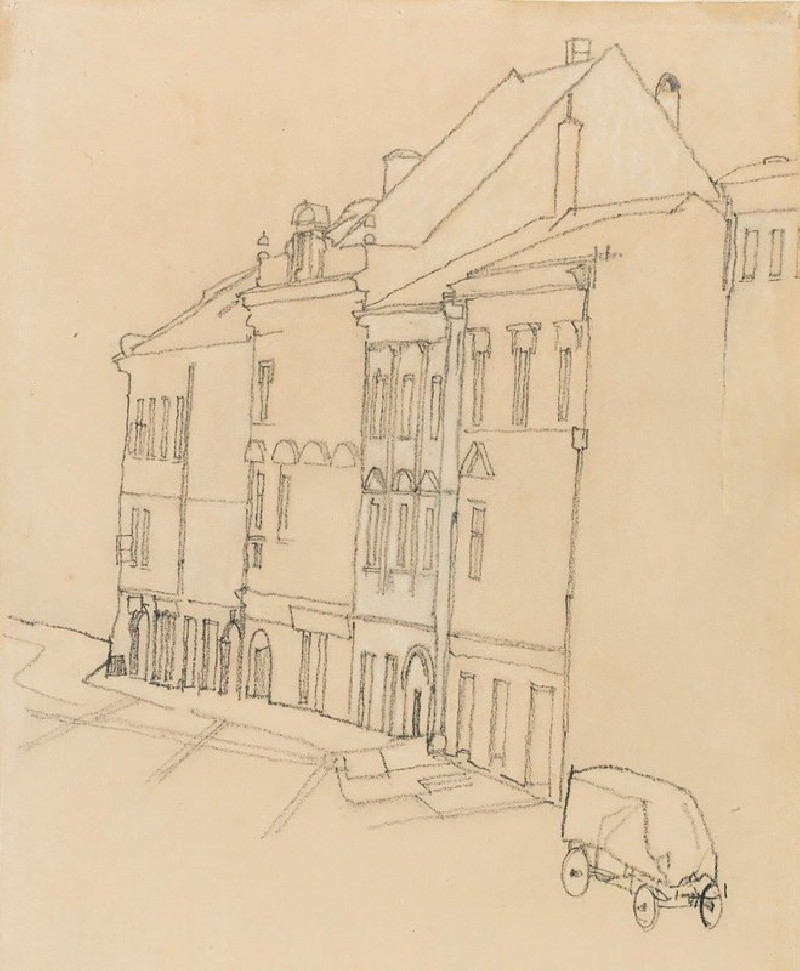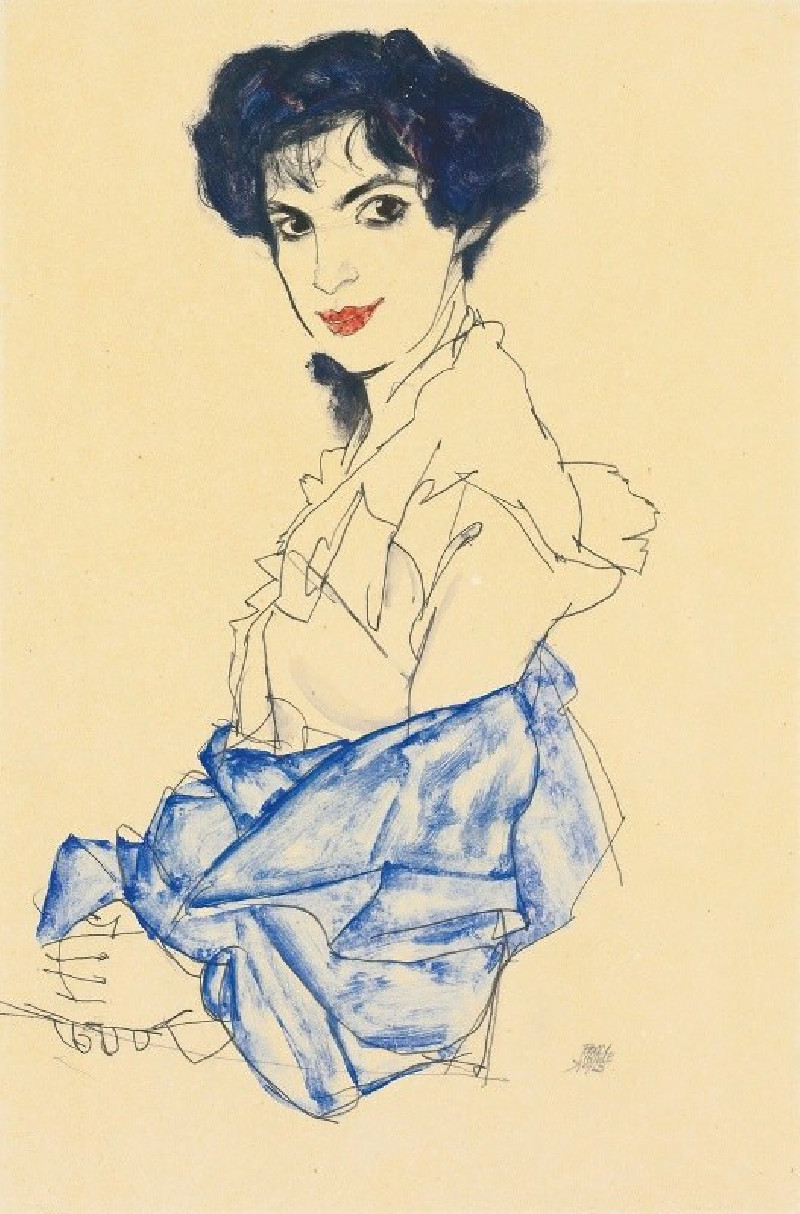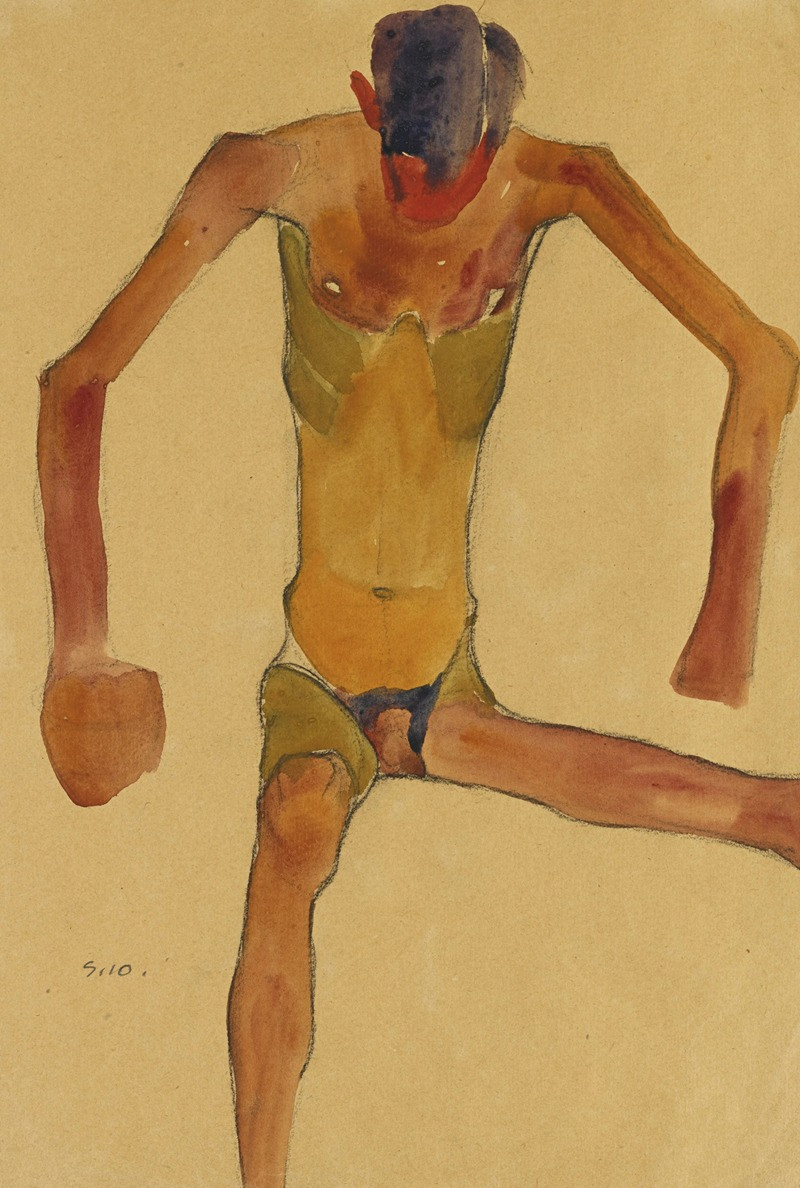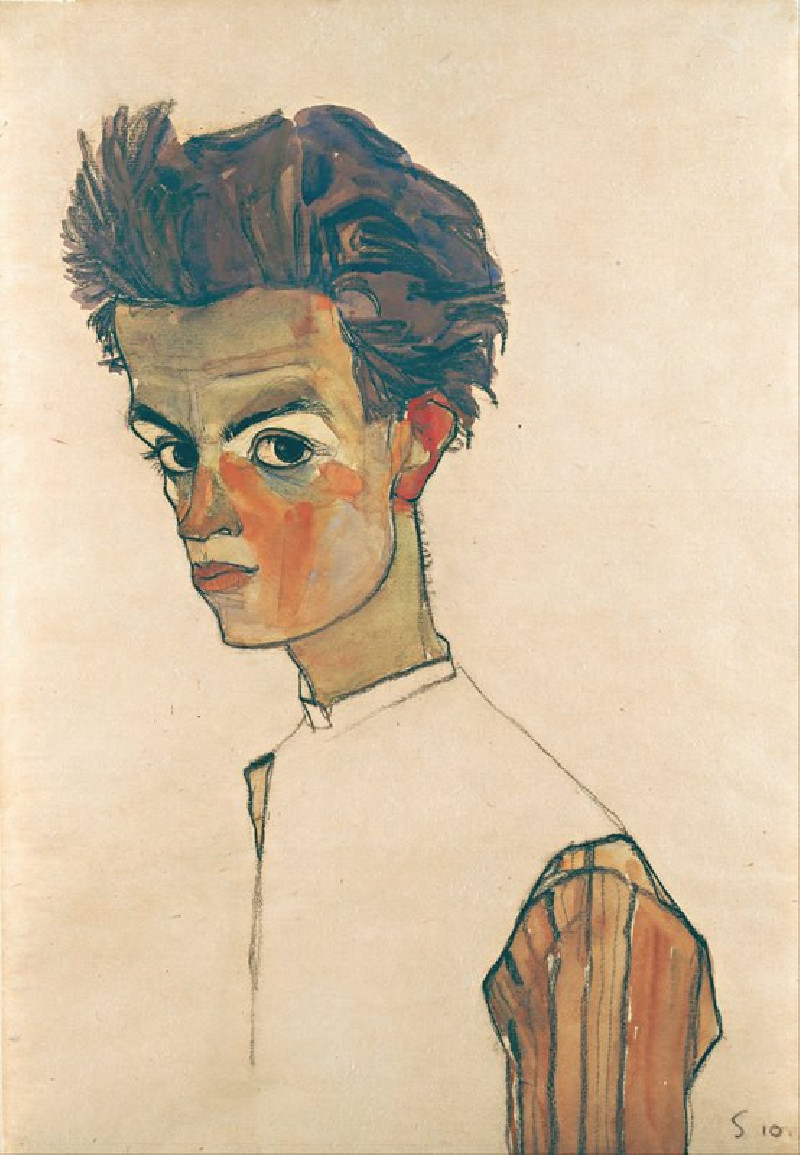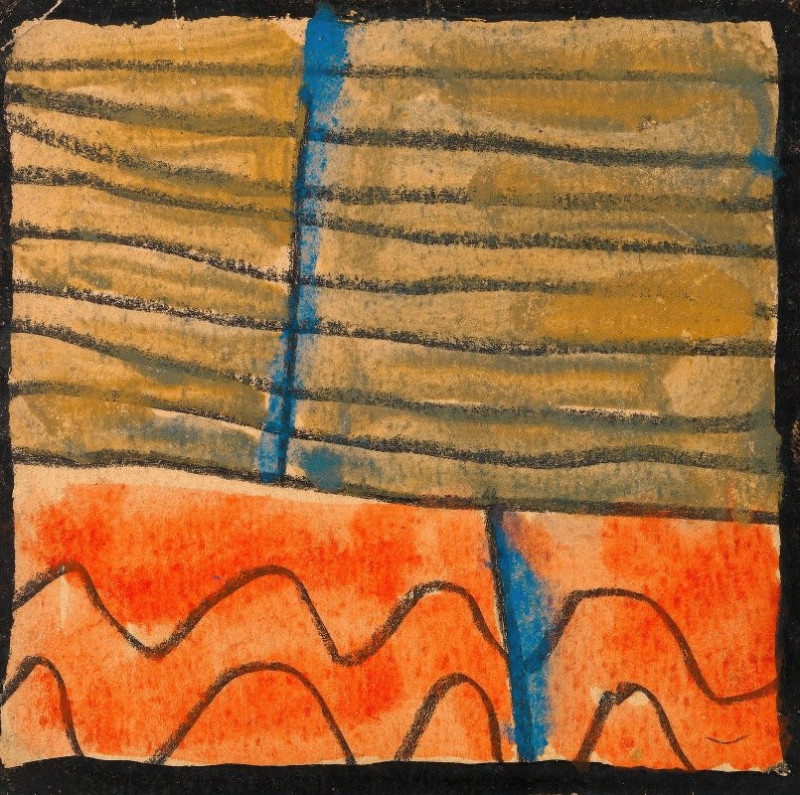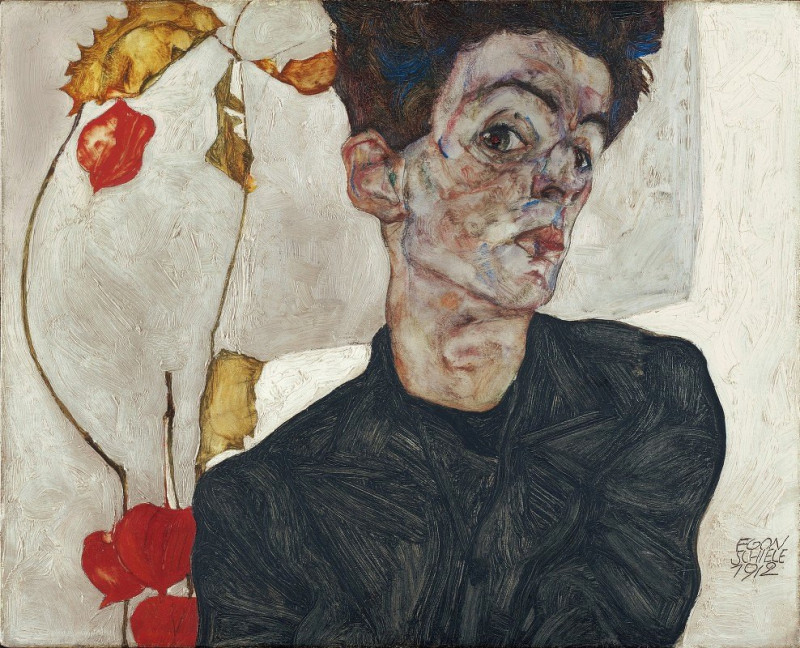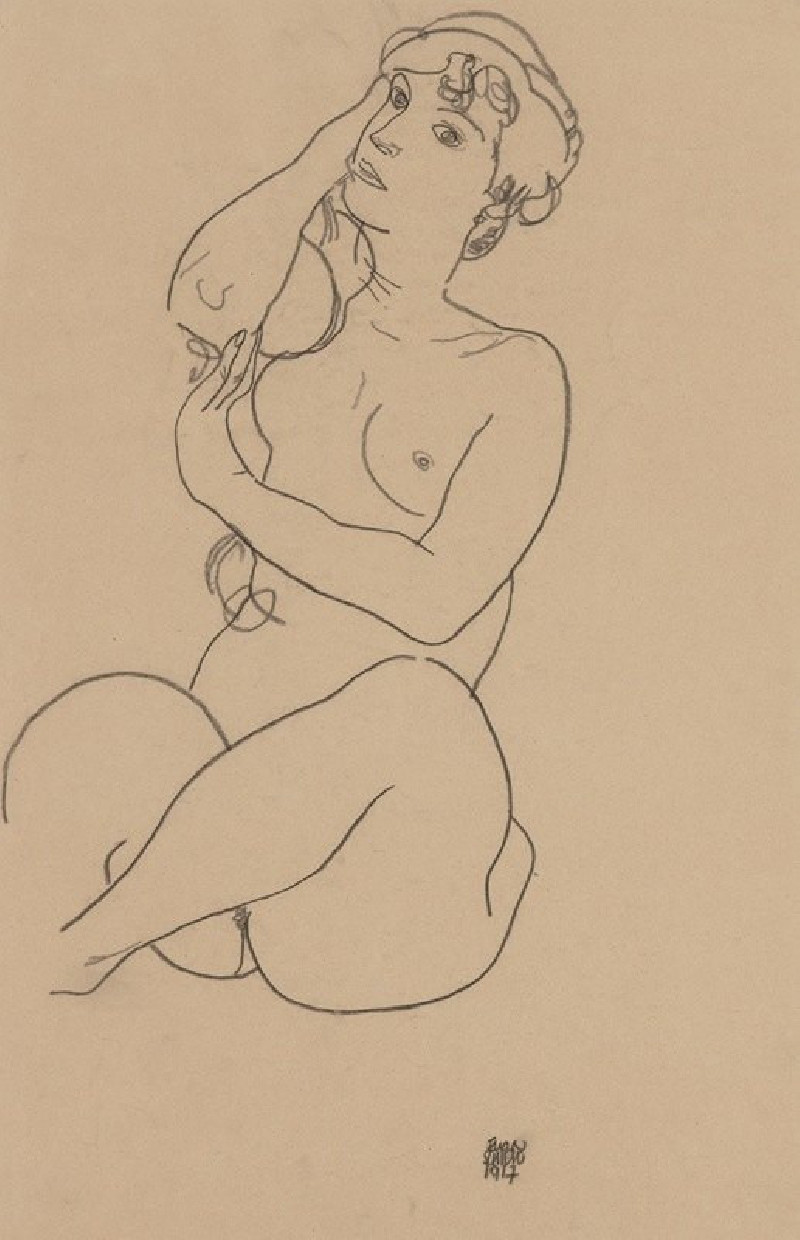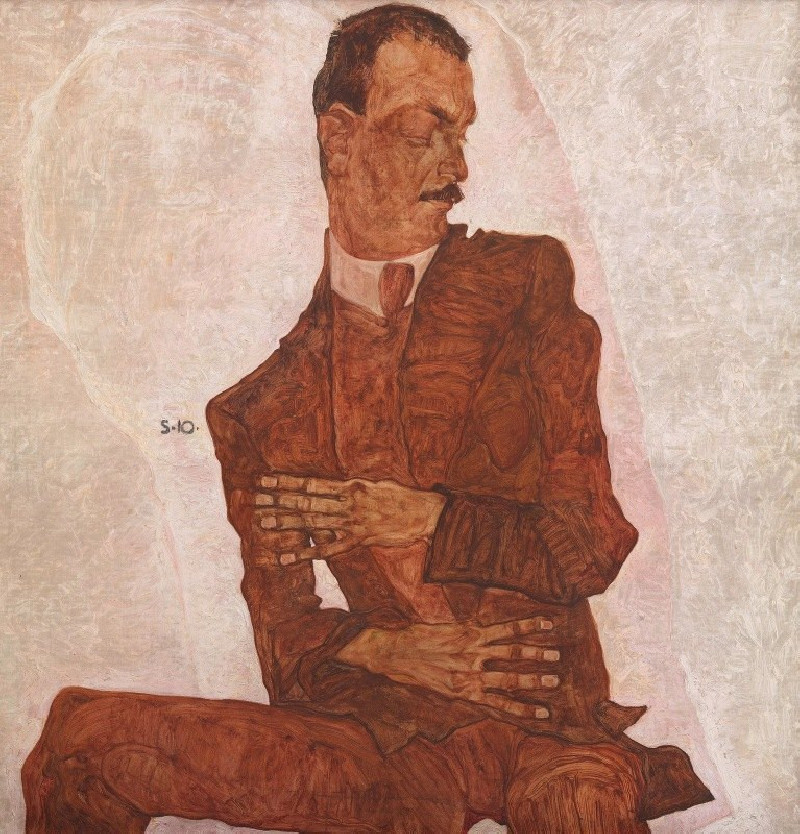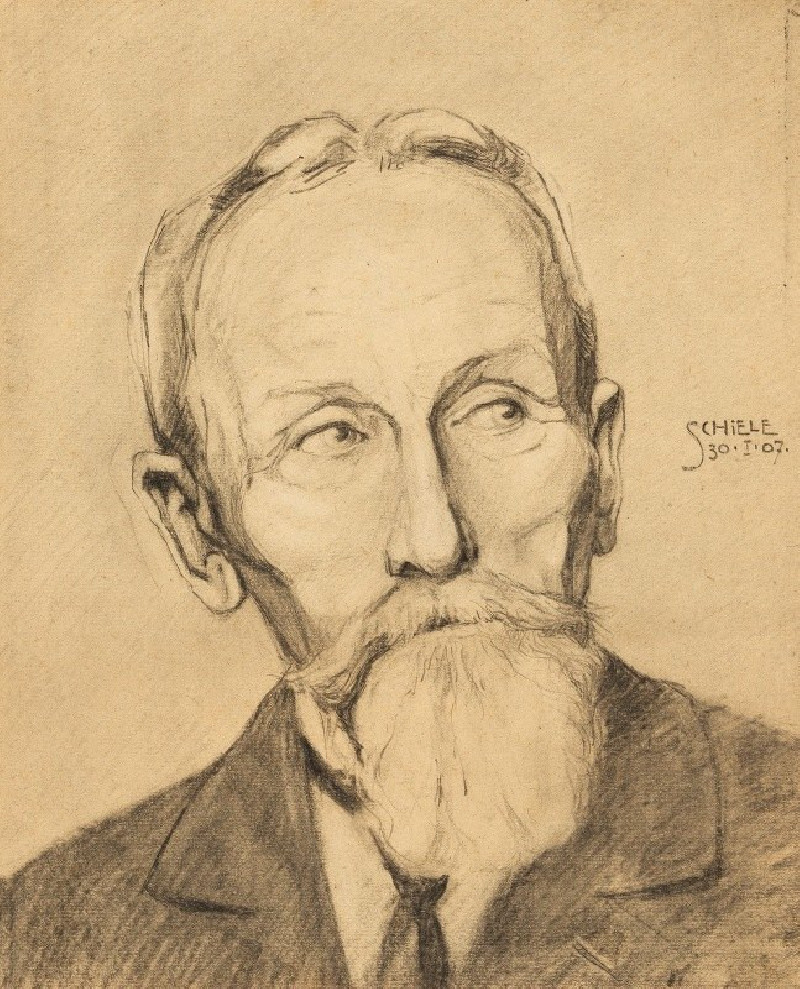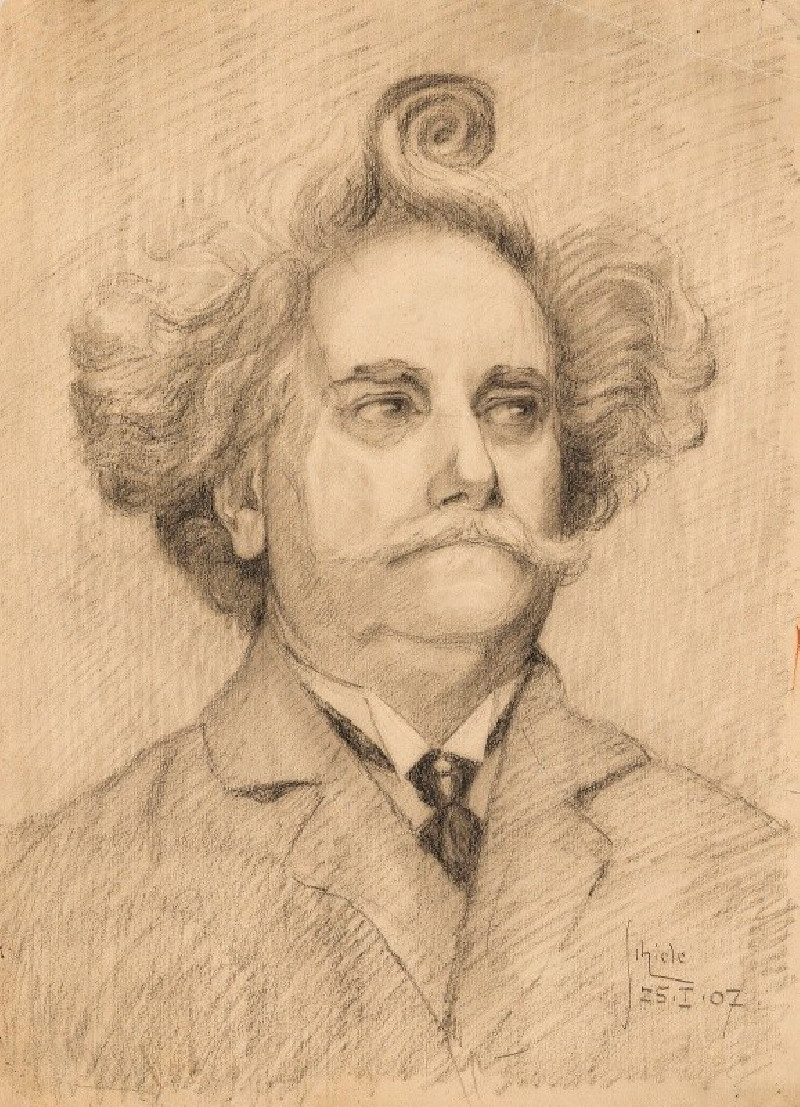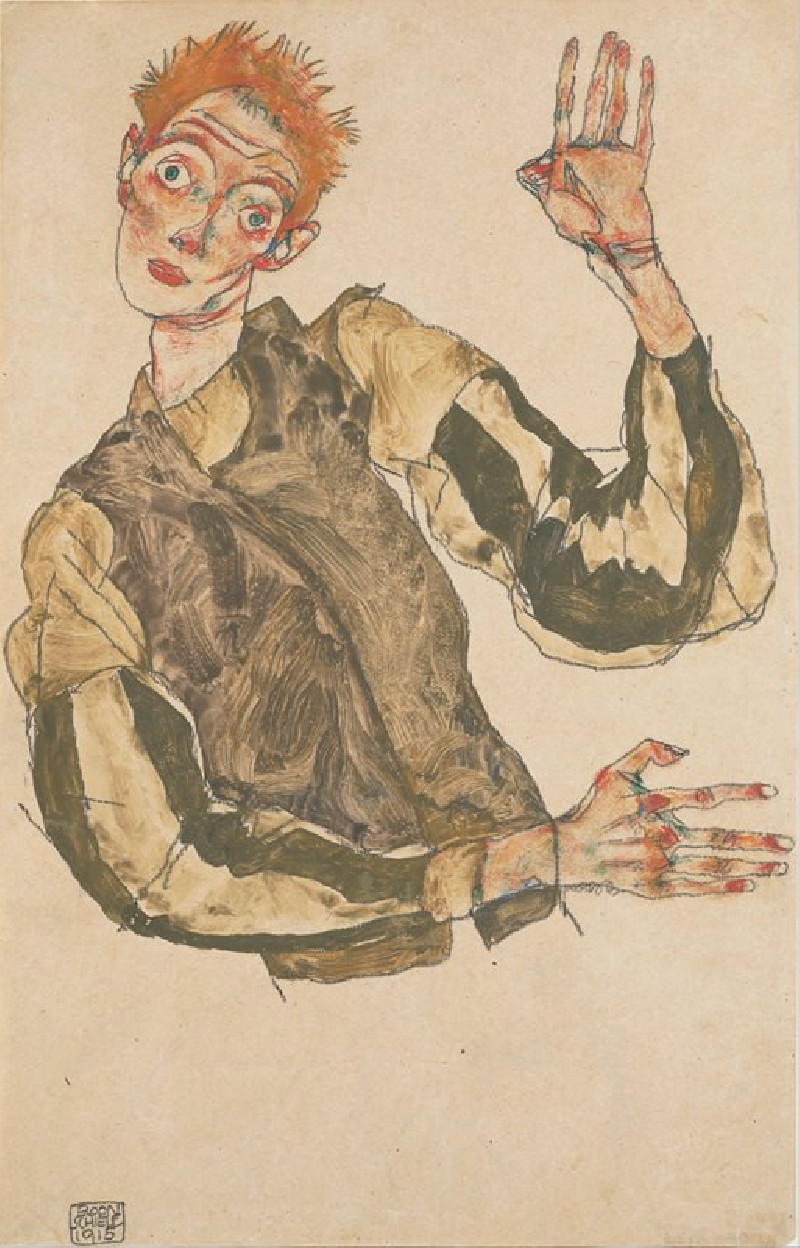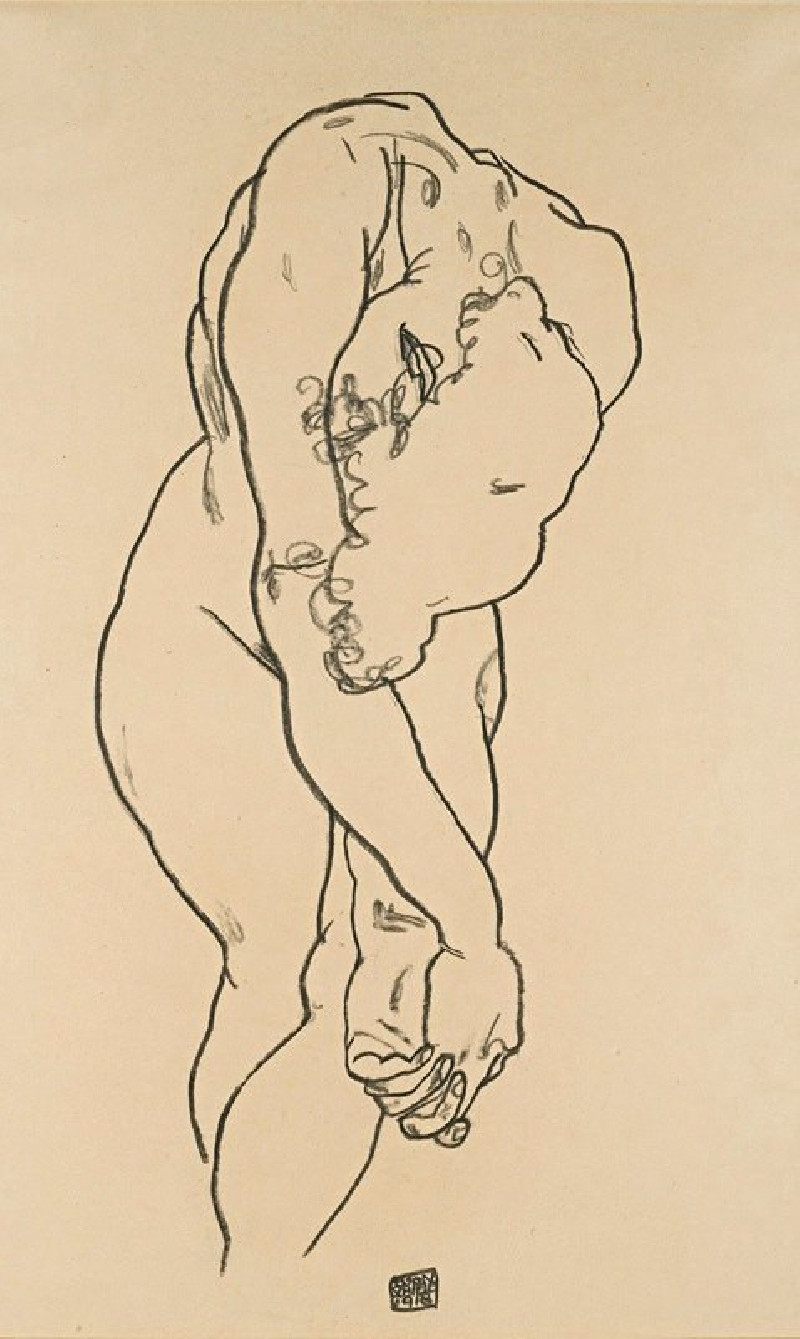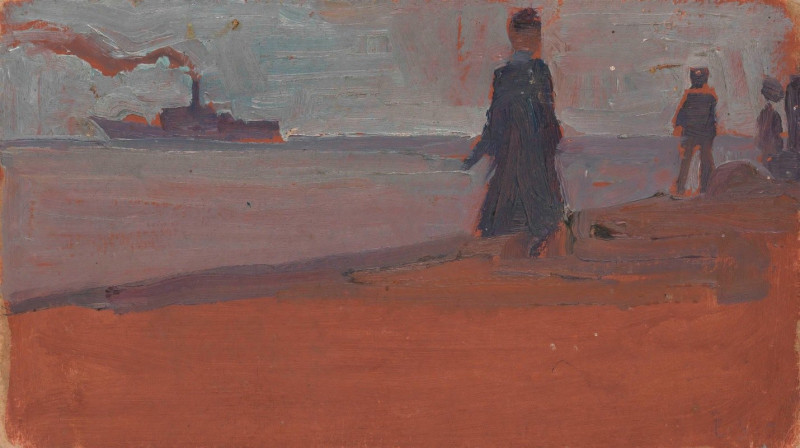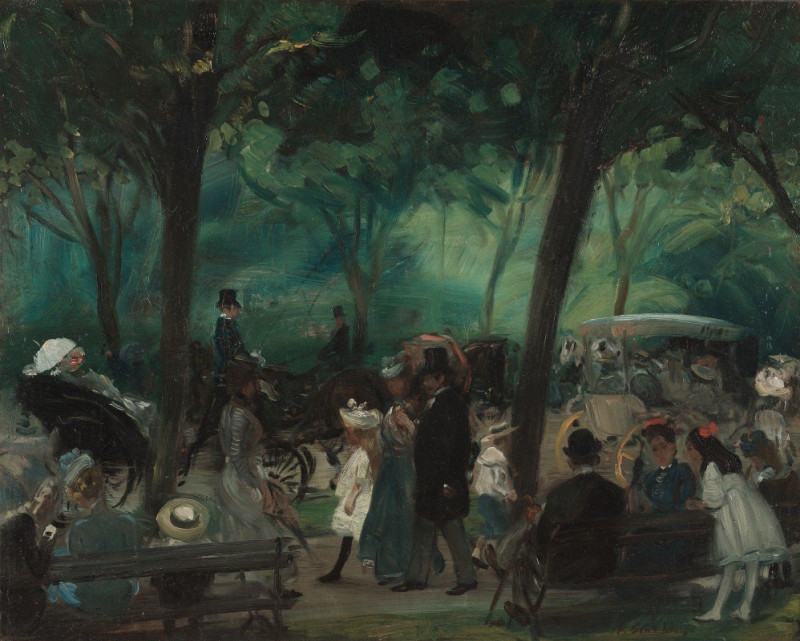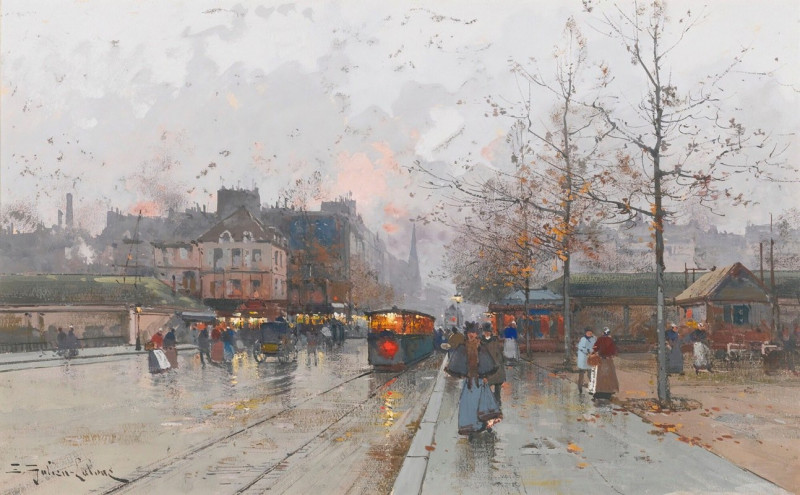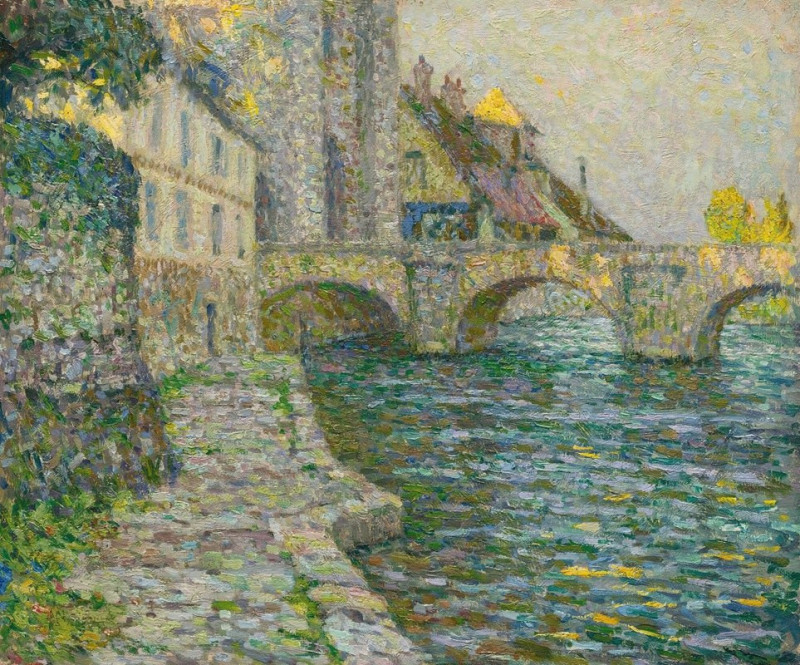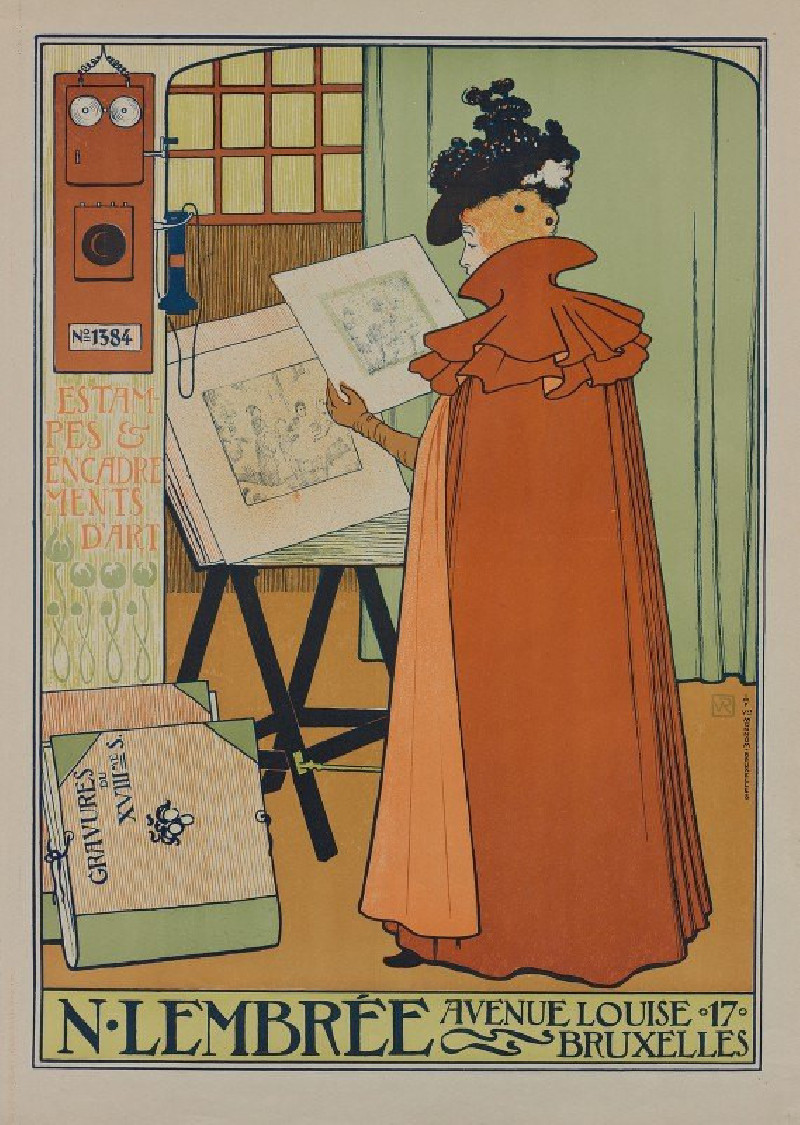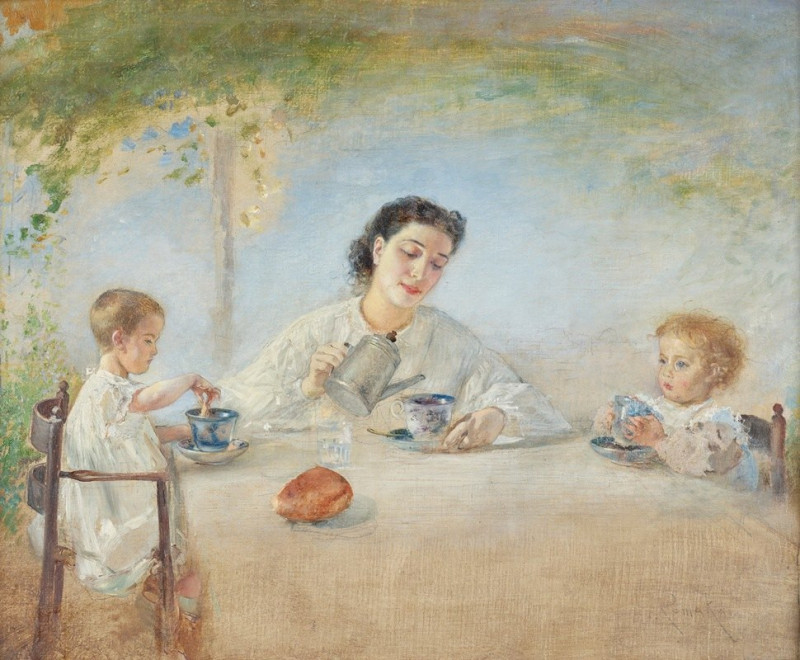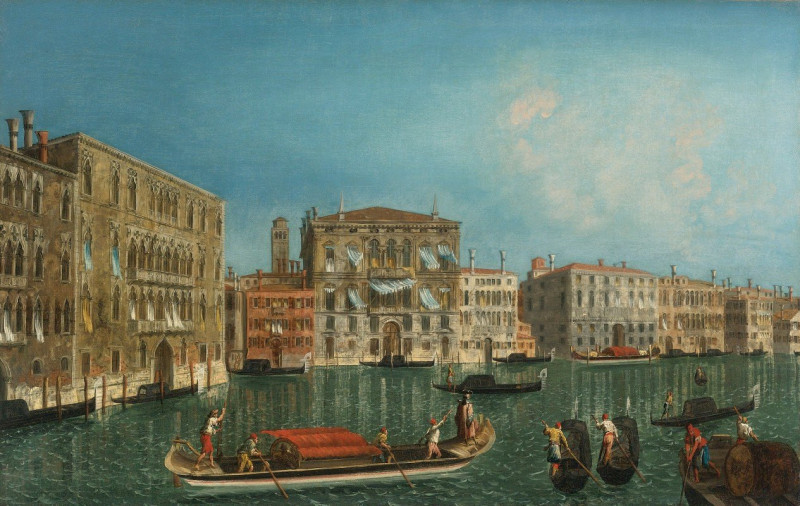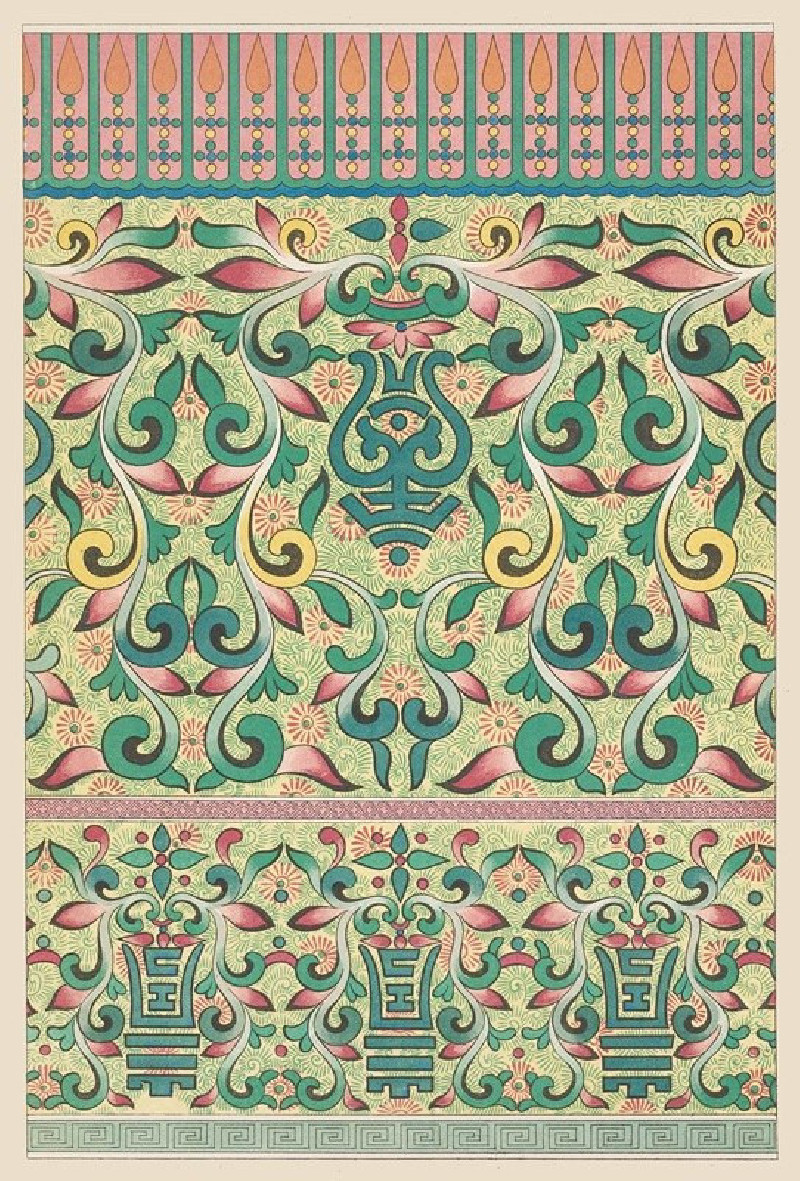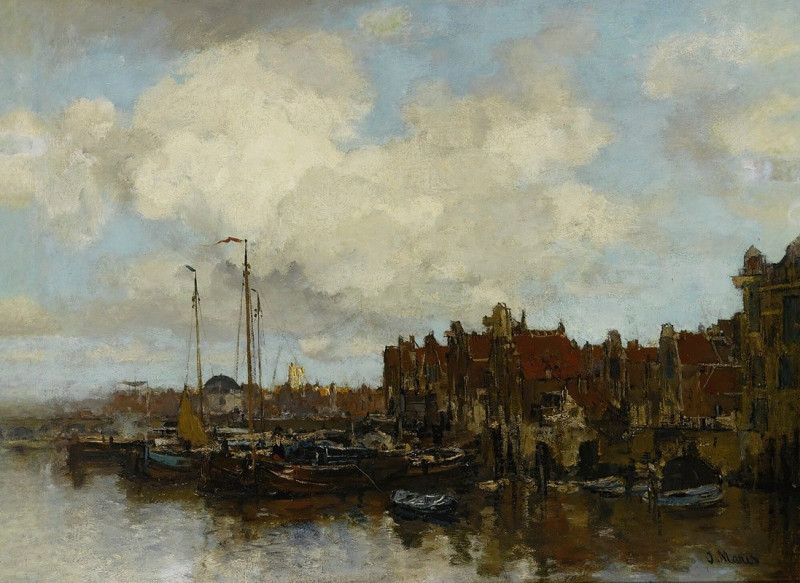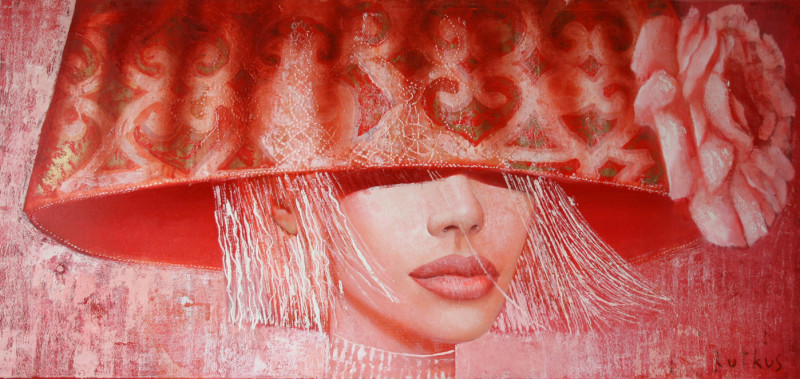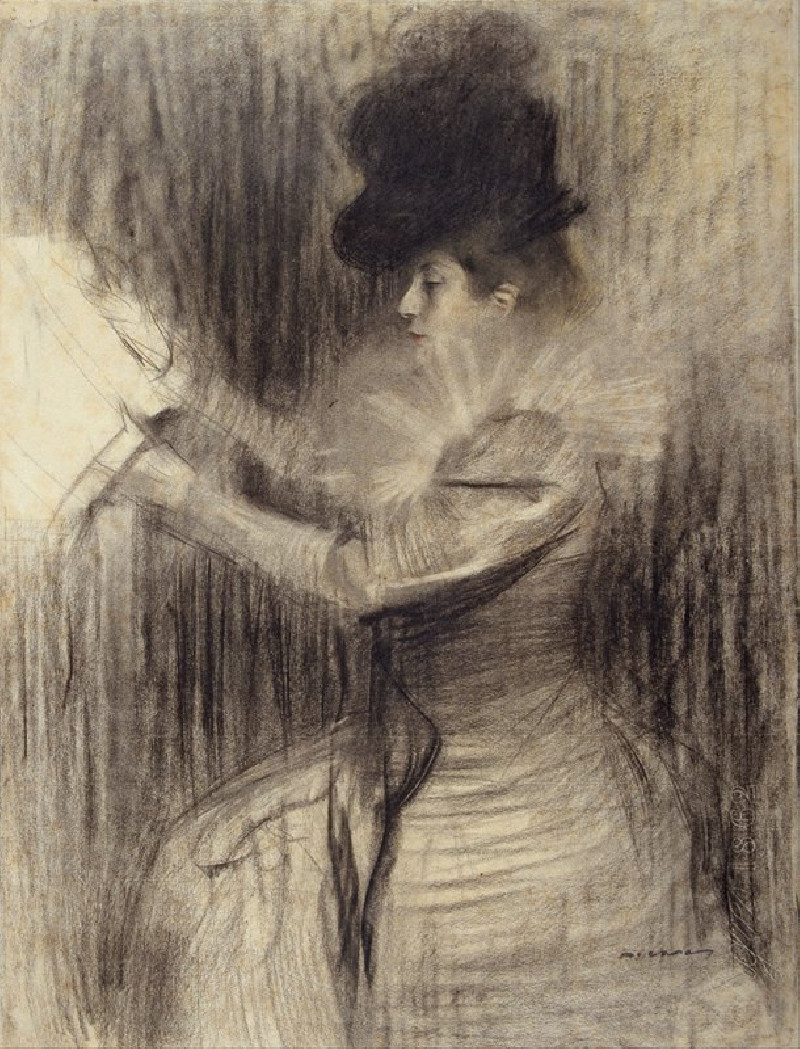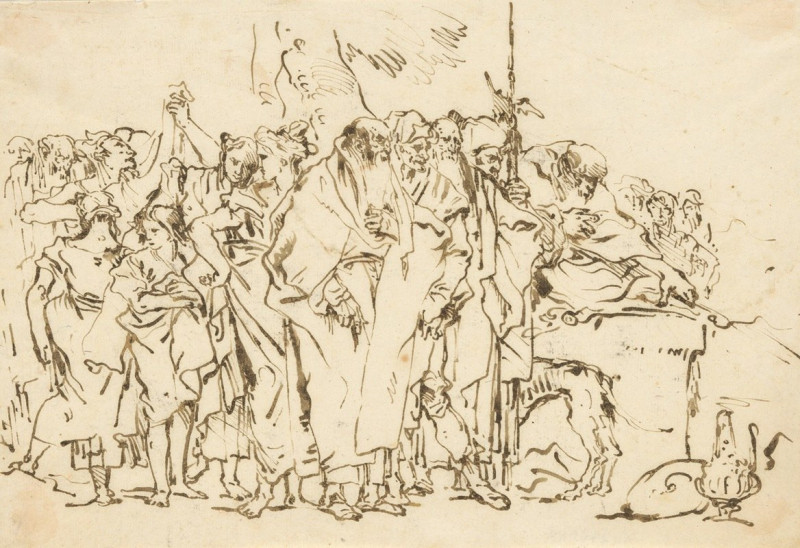Abstrahierte Giebel (1918)
Technique: Giclée quality print
Recommended by our customers
More about this artwork
This painting, "Abstrahierte Giebel" by Egon Schiele, created in 1918, showcases elements of abstraction with a simplified portrayal of architectural forms, possibly gable ends of houses. The composition is divided into several horizontal layers, each detailed with distinct colors and patterns that add a textural depth to the piece. The top section is dominated by a deep blue sky punctuated by rough, expressive strokes, suggesting movement within the tranquility of the scene.Below the sky, two triangular shapes suggest the gable roofs of buildings. These forms are rendered with minimal detail, emphasizing geometric simplicity. The middle section features a series of stripes in muted beige and green tones, providing a stark contrast to the vibrant yellow band beneath, which is adorned with a zigzag pattern resembling waves or perhaps agricultural fields.The colors and patterns used in the painting evoke a sense of harmony and calmness, while the abstracted forms invite viewers to focus not just on the potential subject matter but also on the interplay of color, shape, and texture. Schiele’s approach here is less about detailed representation and more about capturing an essence or mood, which is typical of his experimentation with expressionism and abstract forms during his career. The raw and somewhat coarse textures of the materials combined with the bold use of color demonstrate Schiele’s unique artistic vision that often explored the emotional depth through simplified forms.
Delivery
Returns
Egon Schiele was an Austrian painter. A protégé of Gustav Klimt, Schiele was a major figurative painter of the early 20th century. His work is noted for its intensity and its raw sexuality, and the many self-portraits the artist produced, including nude self-portraits. The twisted body shapes and the expressive line that characterize Schiele's paintings and drawings mark the artist as an early exponent of Expressionism.



